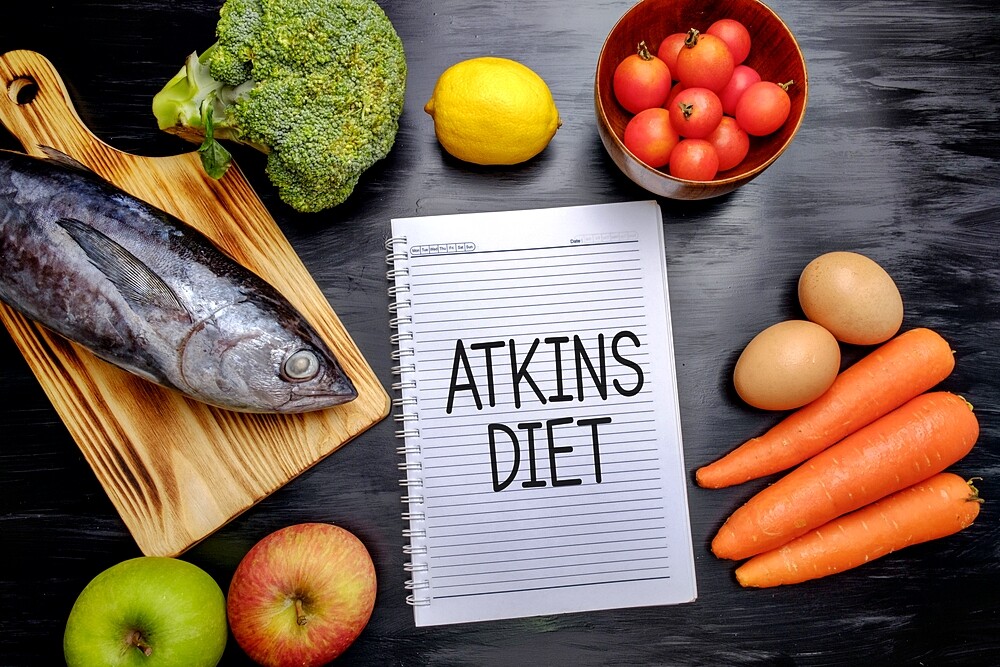The principle of the Atkins diet is very simple: Avoid carbohydrates as much as possible in order to lose weight. Instead, fat and protein are on the menu without restriction.
In four phases to the dream body with the Atkins diet
In the Atkins diet, carbohydrates (kh) such as noodles, bread, rice and sugar are avoided as far as possible. Instead, high-fat foods and proteins are recommended on the diet. The goal is the condition known as ketosis: in this condition fat is burned with maximum efficiency through an accelerated metabolism. The big and hopefully quickly achieved goal: Long-term weight loss over a self-chosen period of time.
There are four phases to the Atkins diet, the last phase being about maintaining weight in the long term. The best thing about the theory: We don’t have to count calories!
The phases of the Atkins diet
Phase 1 of the Atkins diet takes at least two weeks to allow the body to get used to the change in diet. Fish, meat, eggs and soya products are allowed, but not dairy products such as cheese. The permitted amount of carbohydrates (20 grams) should be ingested in the form of salad and vegetables, and bread is also strictly forbidden.
Phase 2 is the basic reduction diet according to Atkins: After the rather one-sided introductory phase, the programme now focuses on nutrient-rich kh in the form of vegetables, nuts, berries and pulses. The amount of carbohydrates may be increased by 5 grams per week. Those who no longer lose weight must reduce the amount of carbohydrates by 5 grams again.
Phase 3 is phase of the Atkins diet, in which weight loss slowly but surely stagnates. The amount of carbohydrates is increased by 10 grams each week, and on two days of the week, an additional 20 to 30 grams of foods with a high nutrient density may be added to the diet.
Phase 4 once you have arrived here, ideally you have already reached your desired weight. In this lifelong maintenance diet, the choice of permitted foods increases dramatically: vegetables, fish and fruit are part of the daily diet plan. Pasta and potatoes are still only permitted in exceptional cases.
What’s behind the diet?
When inventor Robert Atkins published his first diet book in the 1970s, the motto was: fat and protein may be eaten without limit, carbohydrates over five grams in any form are not allowed. At least in the first 14 days of the weight loss cure.
Later, Atkins adapted his theory once again and allowed a carbohydrate quantity of 20 grams per day in the first phase of the diet. Vitamins and minerals, which are otherwise taken in the form of fruit, were to be provided to the body through supplements. The reason: carbohydrates are metabolized by our body differently from fat. This means that a high-fat diet plus carbohydrates promotes fat storage in our body.
If the kh are simply left out, instead of fat storage, fat burning is stimulated. The proteins also ensure that the feeling of fullness after eating lasts longer. Thus, the energy that we basically gain from fat is burned directly and we reduce our weight.
Is the Atkins diet healthy?
Nutrition experts and physicians have long been critical of Robert Atkins’ diet. The reason for this is the one-sidedness of food, especially in the early days. The same applies, however, to all low-carb diets. A fat-rich nutrition can besides badly affect the Cholesterinwerte. Besides the high fat content, the enormous protein content is also criticised. The Atkins diet is also said to increase the risk of cardiovascular disease, as a Swedish study found in 2012.
The Atkins diet is therefore certainly not considered to be 100 percent “healthy”. What the inventor Atkins must be credited with, however, is that the diet is effective – as numerous studies have shown.

